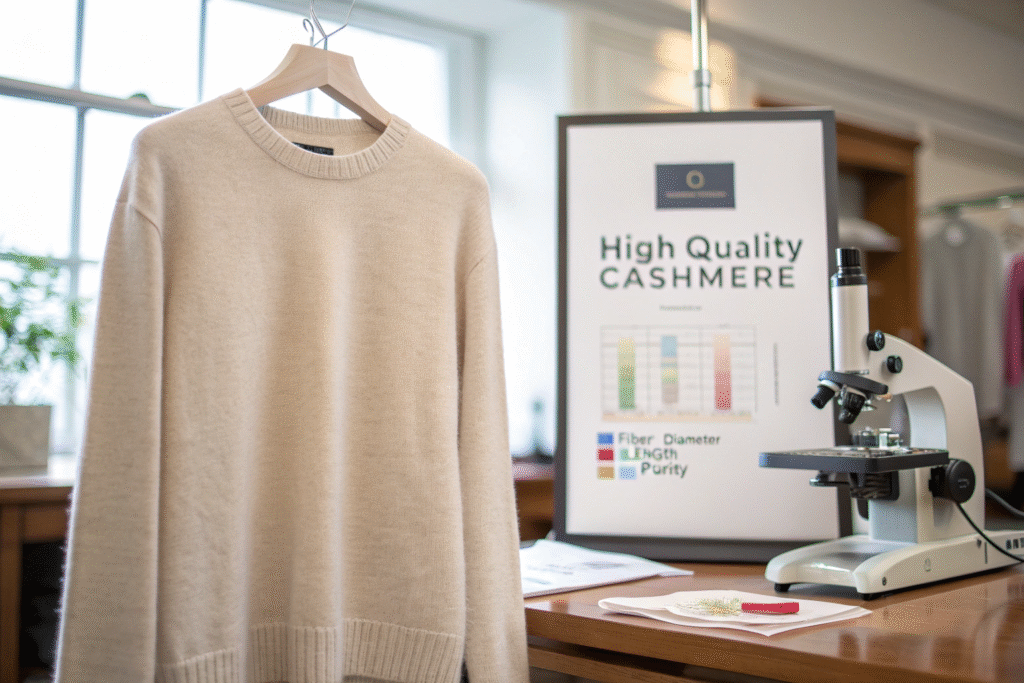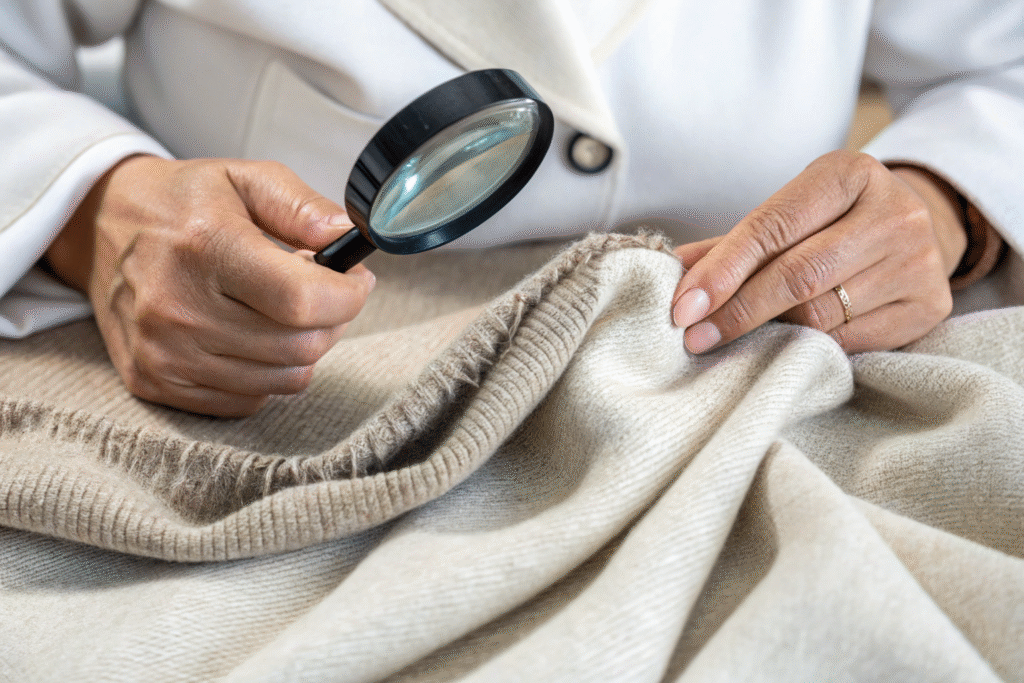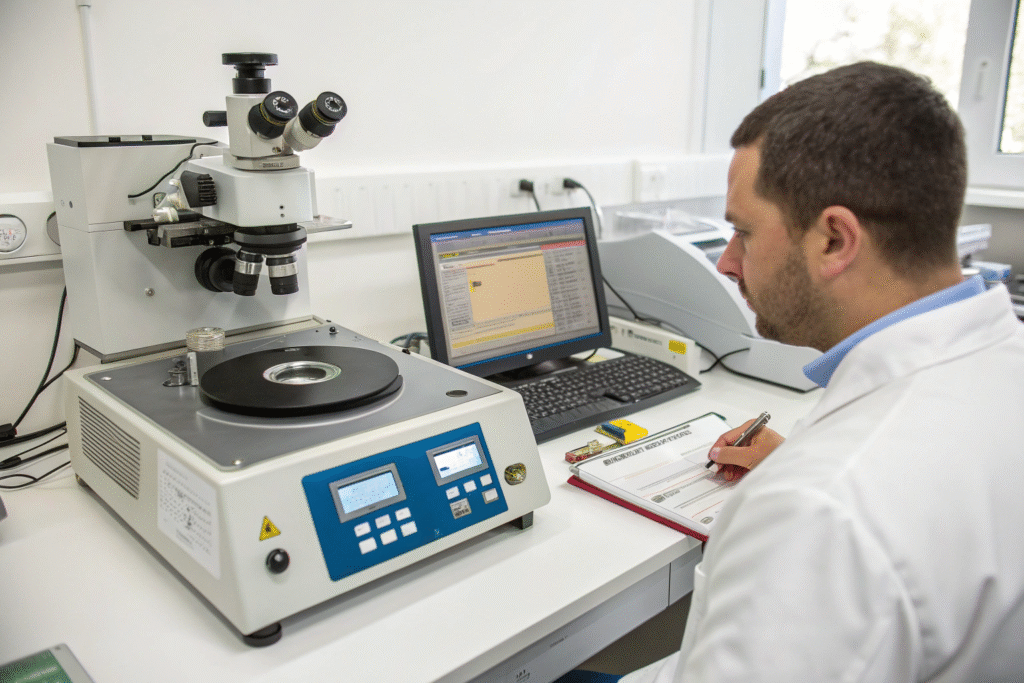For American apparel brand owners like Ron, sourcing high-quality materials is a top priority. You know that the fabric you choose can make or break your product line. You might have heard about cashmere's legendary softness and premium status, but you also need to be sure you're getting what you pay for. In a market flooded with varying qualities and prices, understanding the true value of cashmere is crucial for making smart sourcing decisions that protect your brand's reputation and your bottom line.
Cashmere is a premium natural fiber known for its exceptional softness, light weight, and superior insulation, and verifying its quality involves checking factors like fiber diameter, length, and purity through specific tests. As an apparel manufacturer with decades of experience, we help our partners navigate these details to ensure they receive genuine, high-grade cashmere for their collections, mitigating the risks of inferior quality and ensuring customer satisfaction.
Understanding cashmere is more than just knowing its definition; it's about mastering the details that guarantee quality for your brand. Let's explore the key aspects you need to know.
What are the key characteristics of high-quality cashmere?
When you invest in cashmere, you are paying for a specific set of properties. Knowing these characteristics helps you set clear expectations with your supplier and communicate value to your customers. High-quality cashmere is defined by its fiber diameter, length, and purity.

What is the importance of fiber diameter in cashmere?
Fiber diameter, measured in microns, is the most critical factor determining cashmere's softness. The finest cashmere fibers are typically between 14 and 16 microns. For comparison, a human hair is about 75 microns. Thinner fibers feel softer and less prickly against the skin. Some suppliers may mix in coarser hairs to reduce costs, which significantly diminishes the luxurious handfeel. We always insist on providing our partners with test reports from independent labs like the International Wool Textile Organization to verify the average fiber diameter of the raw materials. This transparency is key to building trust and ensuring you receive the premium quality you are sourcing.
How does fiber length affect the durability of cashmere?
While fineness defines softness, fiber length is crucial for durability. Longer fibers, generally between 34 and 45 millimeters, are stronger and less prone to pilling. During the spinning process, longer fibers bind together more securely, creating a more resilient yarn. Shorter fibers tend to work their way loose from the yarn structure, forming pills on the garment's surface. A common pain point for brands is receiving garments that pill excessively after just a few wears, leading to customer complaints. By prioritizing cashmere with a good staple length, we ensure the finished garments have a longer lifespan, protecting your brand from returns and negative reviews. This aligns with the strict quality control standards we adhere to in our production process.
What are the standard tests for verifying cashmere quality?
Trust is good, but verification is better. Relying solely on a supplier's word is a risk you cannot afford. Implementing a rigorous testing protocol is non-negotiable for safeguarding your investment. These tests provide objective data on the material's composition and properties.

How can a fiber composition test prevent supplier fraud?
A fiber composition test is your first defense against adulteration. This test, often performed using microscopy or DNA analysis, identifies the exact percentage of cashmere in a fabric. Unscrupulous suppliers may blend cashmere with cheaper wool like sheep's wool or even synthetic fibers to increase their profit margin. We have seen cases where brands received "100% cashmere" that was actually a blend, leading to costly disputes. To prevent this for our clients, we arrange for pre-production batch testing at certified laboratories. The results, which confirm the product meets the Oeko-Tex Standard 100 for harmful substances and composition, are shared directly with the brand before manufacturing begins. This proactive approach eliminates the risk of certificate falsification, a common pain point you've mentioned.
Why is a pilling test crucial for customer satisfaction?
Pilling is the number one complaint associated with cashmere garments. A pilling test simulates wear and tear to predict how the fabric will perform over time. The Martindale method is a common standard, where the fabric is rubbed against itself for a set number of cycles. The resulting pilling is then rated on a scale. A high pilling resistance score indicates a garment that will maintain its smooth, luxurious appearance longer. For your brand, this translates to higher customer satisfaction and fewer returns. We integrate these performance tests into our development process, ensuring that the garments we produce for you not only feel luxurious initially but also endure, upholding your brand's reputation for quality. This is a core part of our garment manufacturing commitment.
How does the sourcing of raw cashmere impact the final product?
The journey of a cashmere garment begins long before it reaches the factory. The origin and processing of the raw fiber have a profound impact on the quality, ethics, and consistency of your final product. Understanding this chain is vital for making responsible sourcing decisions.

What is the difference between Chinese and Mongolian cashmere?
The two primary sources of cashmere are China and Mongolia. Chinese cashmere, particularly from the Inner Mongolia region, is often characterized by longer fiber length, which contributes to better durability. Mongolian cashmere is renowned for its exceptional fineness and softness. However, generalizations can be misleading. The specific breed of goat, the climate, and the harvesting methods all cause variations. As your manufacturing partner, we don't just buy "cashmere"; we source from specific regions and herds based on the desired characteristics for your product line. This strategic sourcing allows us to achieve the perfect balance of softness and strength you need, ensuring consistent quality across large orders, which is essential for your distribution model.
Why are sustainable harvesting practices important for quality?
The method of harvesting cashmere—combing versus shearing—directly affects quality. Combing, the traditional method, collects the soft undercoat during the goat's natural shedding season. This yields the purest and longest fibers. Shearing is faster but often cuts the coarse outer guard hairs along with the undercoat, contamininating the raw material. We partner with suppliers who prioritize ethical and sustainable combing practices. This not only ensures animal welfare but also results in a higher-quality raw material with less guard hair, reducing the need for extensive and damaging chemical processing later. This commitment to quality at the source aligns with the values of many modern American brands and avoids the ethical pitfalls that can damage a brand's image.
What should you look for in a cashmere garment manufacturer?
Choosing the right manufacturing partner is the most critical step in bringing a high-quality cashmere product to market. The manufacturer's expertise, controls, and communication directly impact the outcome of your order. Your pain points of delayed shipments and poor communication are often symptoms of a deeper manufacturing issue.

How can a manufacturer ensure consistent quality control?
Consistency is the hallmark of a professional manufacturer. It's not enough for one sample to be perfect; every single garment in the production run must meet the same standard. We achieve this through a multi-stage quality control system integrated into our full-package production line. This includes checking the incoming yarn, monitoring the knitting process, and conducting thorough inspections on finished garments. For cashmere, we pay special attention to seam strength, color fastness, and, of course, handfeel. This rigorous process prevents the common issue of receiving a shipment where quality varies drastically from the initial sample, protecting you from unexpected costs and delays.
Why is DDP shipping mode advantageous for US importers?
For American importers, logistical complexities and unexpected costs can erode profit margins. The Delivered Duty Paid (DDP) Incoterm is a significant advantage. When you work with us on a DDP basis, we handle the entire logistics chain, including shipping, insurance, and most importantly, customs clearance and import duties into the USA. You receive a clear, all-inclusive price upfront. This eliminates the surprise fees and bureaucratic hurdles that often cause delays, ensuring your goods arrive on schedule to meet your selling seasons. Our expertise in exporting to North America means we navigate these processes efficiently, providing the reliability you need to plan your business with confidence.
Conclusion
Understanding what cashmere is and how to verify its quality is fundamental to making informed sourcing decisions. It empowers you to distinguish between genuine luxury and clever marketing, ensuring your investment translates into products that delight your customers and strengthen your brand. From the diameter of the fiber to the ethics of its harvest, and from laboratory testing to dependable logistics, each detail contributes to the final value of the garment.
Partnering with a manufacturer who masters these details is the key to success. If you are looking for a reliable partner to bring your high-quality cashmere apparel visions to market successfully, let's talk. We can help you navigate every step from material selection to delivery. For a direct conversation about your next order, please contact our Business Director, Elaine, at elaine@fumaoclothing.com. We look forward to helping your brand excel.










